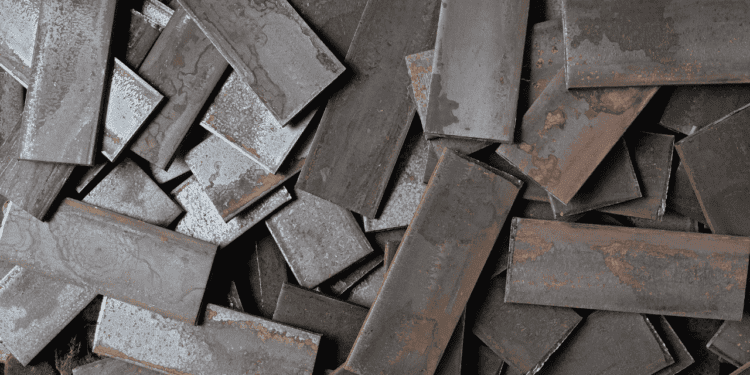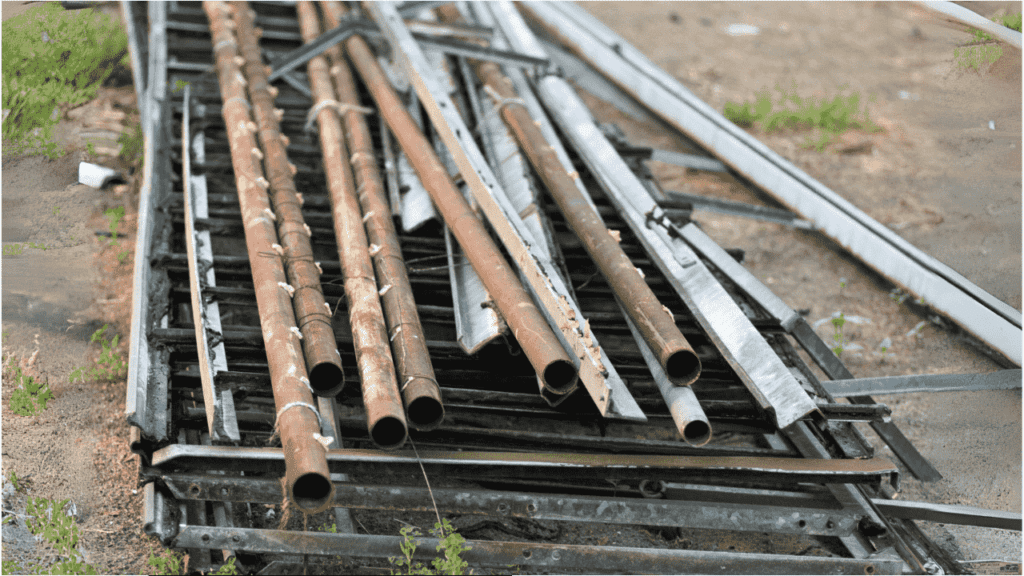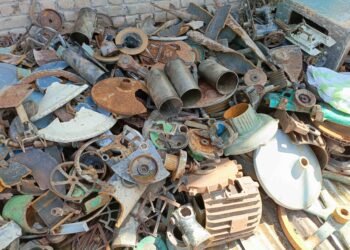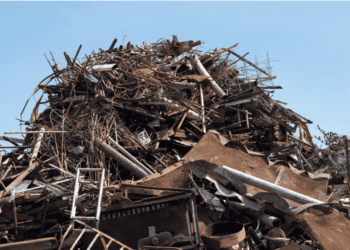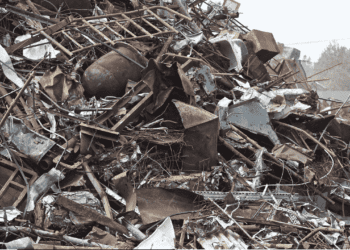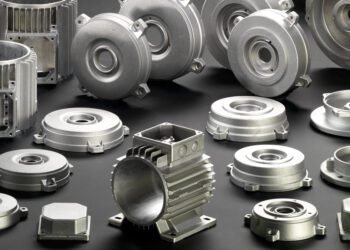Introduction
Iron scrap holds significant value in various industries due to its recyclability and economic benefits. Whether you’re a seasoned trader or a newcomer to the scrap metal market, understanding the dynamics of iron scrap trading is crucial for maximizing profit. In this comprehensive guide, we’ll delve into the world of iron scrap, covering everything from current market rates to effective pricing strategies.
Click Here For Latest Scrap Metal Rates
Understanding Iron Scrap:
Iron scrap, also referred to as ferrous scrap, encompasses discarded iron and steel products that undergo recycling processes for reuse in manufacturing. This category includes old automobiles, appliances, structural steel, machinery, and more. The recycling of iron scrap not only conserves natural resources but also reduces waste and environmental impact.
Click Here For Latest Scrap Metal Rates
Factors Affecting Iron Scrap Prices:
Numerous factors influence the pricing dynamics of iron scrap in the market. These factors include:
- Demand and Supply: Fluctuations in demand from industries such as construction, automotive, and manufacturing significantly impact scrap prices. Increases in construction projects or automotive production can lead to higher demand for iron scrap, thereby driving prices up.
- Economic Conditions: Economic factors such as GDP growth, inflation, and interest rates play a crucial role in determining industrial activities and, consequently, the demand for iron scrap. Economic downturns can result in reduced demand for steel and iron scrap, leading to lower prices.
- Currency Exchange Rates: As scrap metal is traded globally, currency fluctuations can influence import and export prices. Strengthening or weakening of currencies relative to each other can affect the cost of sourcing and processing iron scrap.
- Government Policies: Tariffs, trade agreements, and environmental regulations imposed by governments can have significant implications for the iron scrap market. Policies promoting sustainability and environmental responsibility may increase the demand for recycled iron scrap, positively impacting prices.
Click Here For Latest Scrap Metal Rates
Current Iron Scrap Rates:
As of [insert date], the current iron scrap rates are as follows:
- Scrap Iron Rate: [insert rate] per kg
- Iron Scrap Price: [insert price] per ton
- Today’s Iron Rates: [insert rate] per kg
- Latest Scrap Iron Price: [insert price] per kg
Click Here For Latest Scrap Metal Rates
Effective Pricing Strategies:
To optimize profit margins in iron scrap trading, consider implementing the following pricing strategies:
- Market Analysis: Stay informed about market trends, including demand-supply dynamics and price fluctuations. Conduct regular analysis to identify emerging opportunities and risks.
- Competitive Pricing: Research competitors’ pricing strategies and adjust your rates accordingly to remain competitive in the market. Offer attractive pricing packages or discounts when necessary to attract customers.
- Quality Assessment: Ensure the quality of your iron scrap meets industry standards to justify higher pricing. Consistently monitor the quality of incoming scrap materials and invest in processes that enhance the purity and integrity of the scrap.
- Negotiation Skills: Hone your negotiation skills to secure favorable deals with suppliers and buyers. Negotiate terms that align with your business objectives while maintaining mutually beneficial relationships.
Click Here For Latest Scrap Metal Rates
Tips for Successful Iron Scrap Trading:
Maximize your success in iron scrap trading with these actionable tips:
- Build Relationships: Cultivate strong relationships with suppliers, buyers, and industry stakeholders to enhance trust and collaboration. Establishing long-term partnerships can lead to preferential treatment and access to better deals.
- Invest in Technology: Embrace technology and automation tools to streamline operations and stay ahead of the competition. Implement software solutions for inventory management, logistics optimization, and market analysis.
- Diversify Your Portfolio: Explore opportunities beyond traditional markets by diversifying your product portfolio and geographic reach. Consider expanding into niche markets or offering specialized services to differentiate your business.
- Stay Compliant: Adhere to regulatory requirements and environmental standards to avoid penalties and maintain a positive reputation. Stay updated on changes in legislation and proactively implement measures to ensure compliance.
Click Here For Latest Scrap Metal Rates
FAQs :
1. What is iron scrap, and why is it valuable?
- Iron scrap refers to discarded iron and steel products that undergo recycling processes for reuse in manufacturing. It is valuable due to its recyclability, which conserves natural resources and reduces waste, making it an essential component of the circular economy.
2. How is the price of iron scrap determined?
- The price of iron scrap is influenced by various factors, including demand and supply dynamics, economic conditions, currency exchange rates, and government policies. Fluctuations in these factors can lead to changes in scrap prices.
3. What industries rely on iron scrap?
- Industries such as construction, automotive manufacturing, machinery production, and metal fabrication rely on iron scrap as a cost-effective raw material for manufacturing processes.
4. How can I stay informed about current iron scrap rates?
- You can stay informed about current iron scrap rates by regularly monitoring market updates, subscribing to industry newsletters, following reputable scrap metal market analysts, and using online platforms that provide real-time pricing information.
5. What are some effective pricing strategies for iron scrap trading?
- Effective pricing strategies for iron scrap trading include conducting market analysis, adjusting prices based on competitive pricing, ensuring quality assessment, and honing negotiation skills to secure favorable deals.
6. How can I build relationships in the iron scrap trading industry?
- Building relationships in the iron scrap trading industry involves cultivating connections with suppliers, buyers, and industry stakeholders through networking events, trade shows, industry associations, and online platforms.
7. What technologies can I leverage to streamline iron scrap trading operations?
- Technologies such as inventory management software, logistics optimization tools, market analysis platforms, and digital communication channels can streamline iron scrap trading operations, enhance efficiency, and improve decision-making processes.
8. Are there any regulatory requirements or environmental standards I need to adhere to in iron scrap trading?
- Yes, iron scrap traders must comply with regulatory requirements and environmental standards set by local authorities and international organizations. This includes obtaining necessary permits, adhering to waste management regulations, and implementing sustainable practices.
9. How can I differentiate myself in the competitive iron scrap trading market?
- You can differentiate yourself in the competitive iron scrap trading market by offering superior customer service, providing value-added services such as scrap sorting and processing, diversifying your product portfolio, and focusing on niche markets or specialized sectors.
10. What are the long-term prospects for the iron scrap trading industry?
- The long-term prospects for the iron scrap trading industry remain promising, driven by increasing awareness of environmental sustainability, growing demand for recycled materials, and advancements in recycling technologies. As industries continue to prioritize resource efficiency and waste reduction, the demand for iron scrap is expected to remain strong.
Join our: Whatsapp Group
Conclusion:
Iron scrap trading presents lucrative opportunities for entrepreneurs and businesses seeking to capitalize on the circular economy and sustainable practices. By understanding the intricacies of the market, staying informed about current rates, and implementing effective pricing strategies, you can maximize your profit potential in this dynamic industry.
In conclusion, iron scrap trading is a dynamic and profitable venture for those willing to navigate the complexities of the market. By staying informed about current rates, leveraging effective pricing strategies, and embracing innovation, you can unlock new opportunities and drive success in the iron scrap industry.



